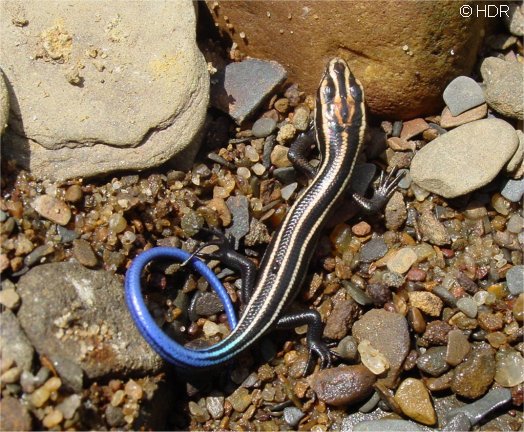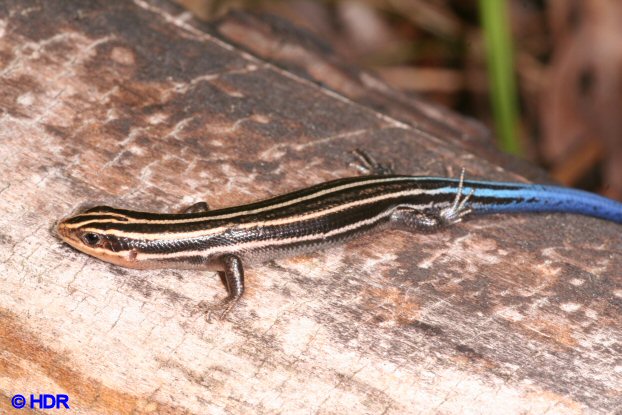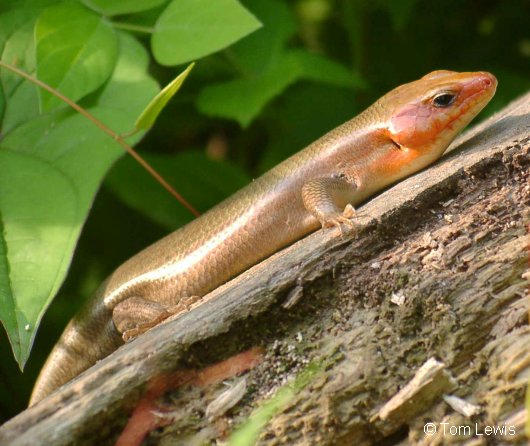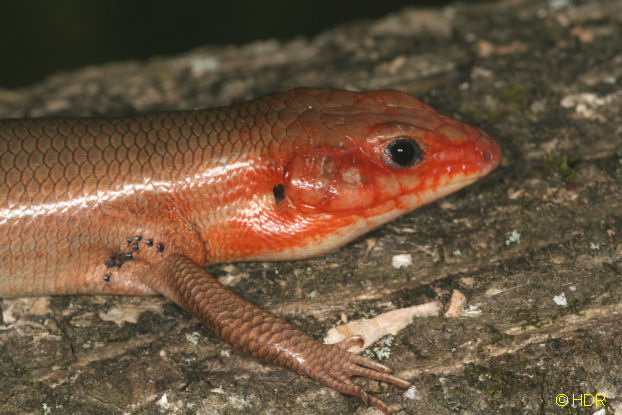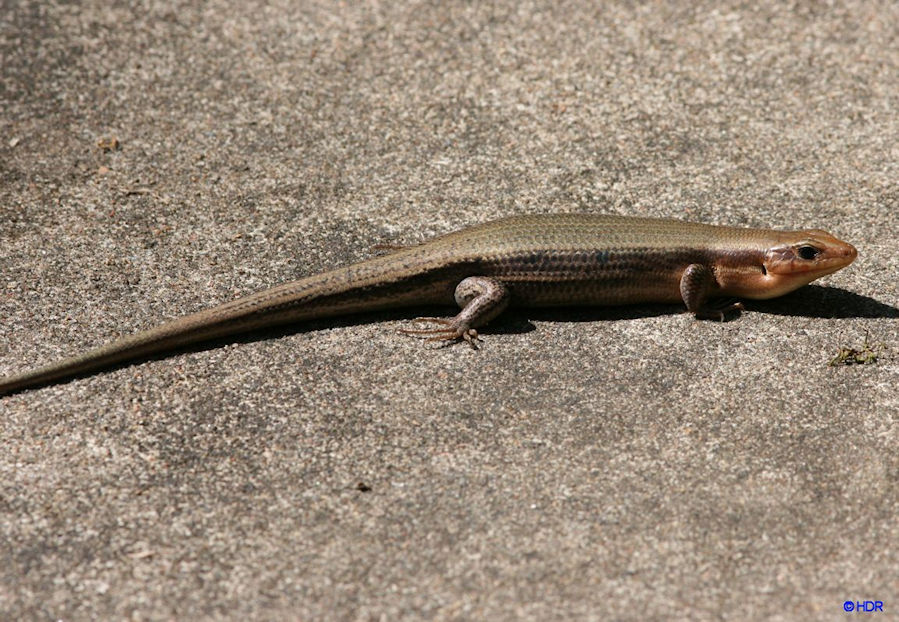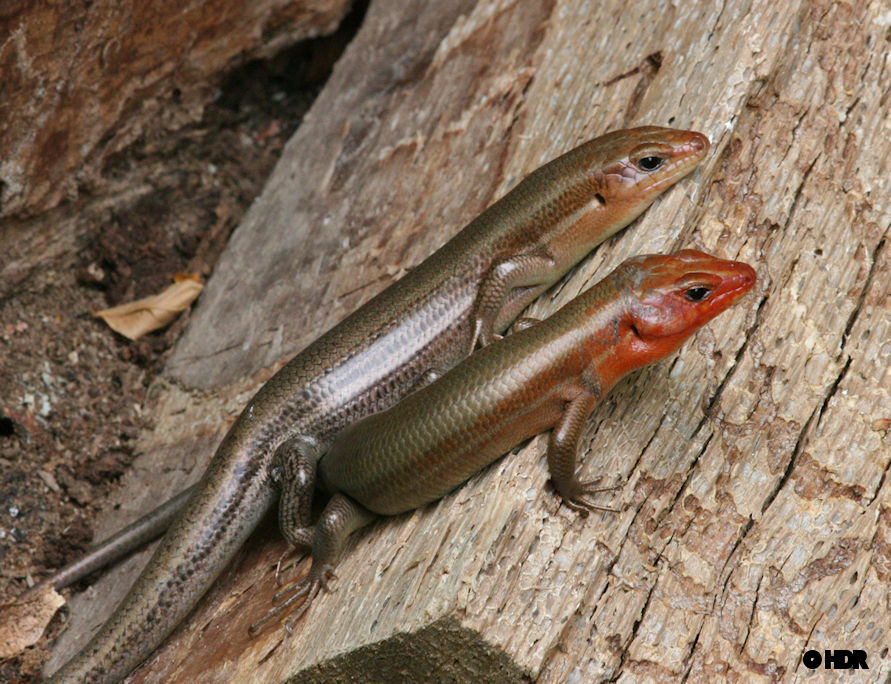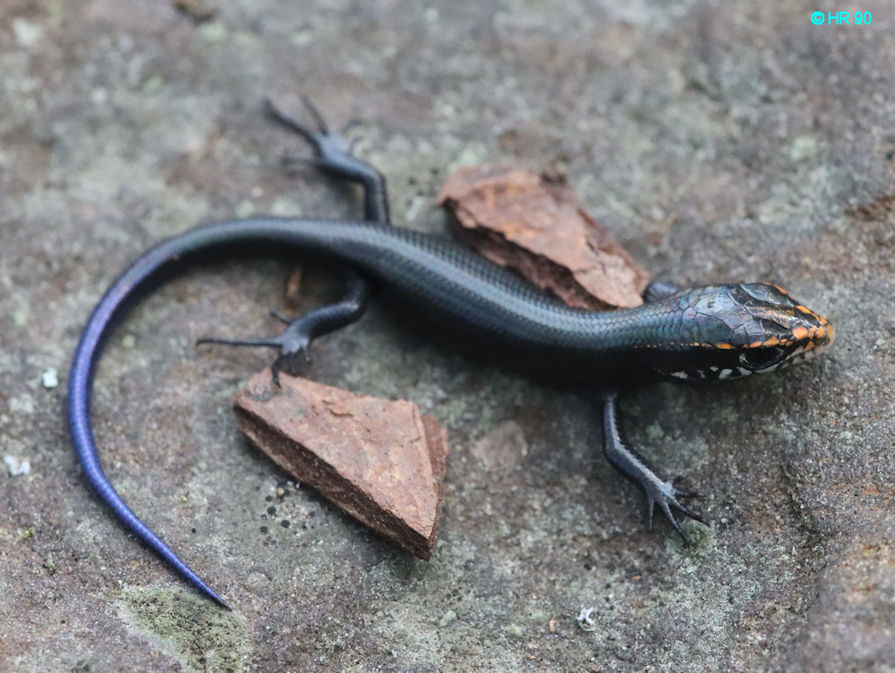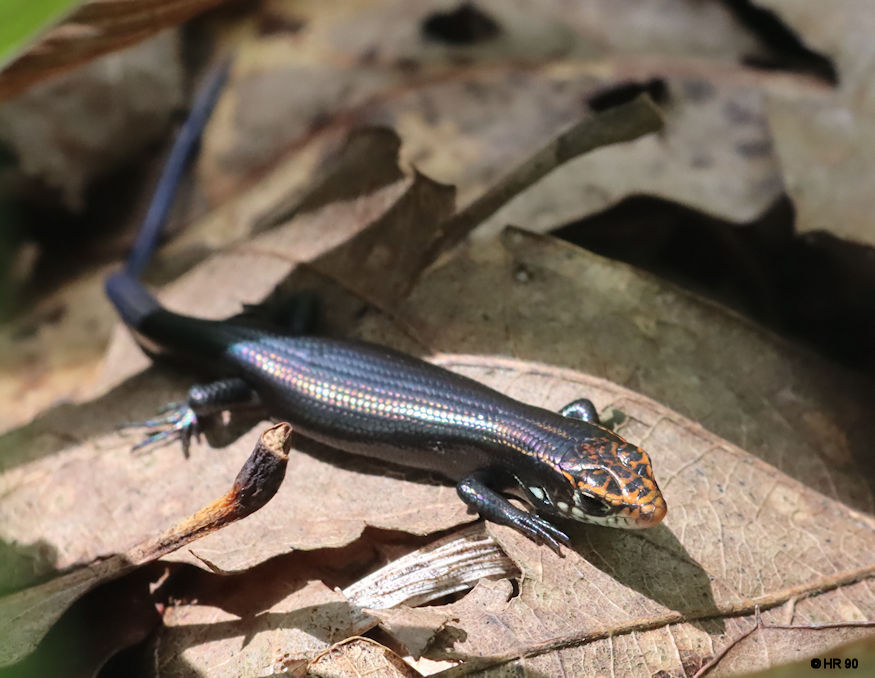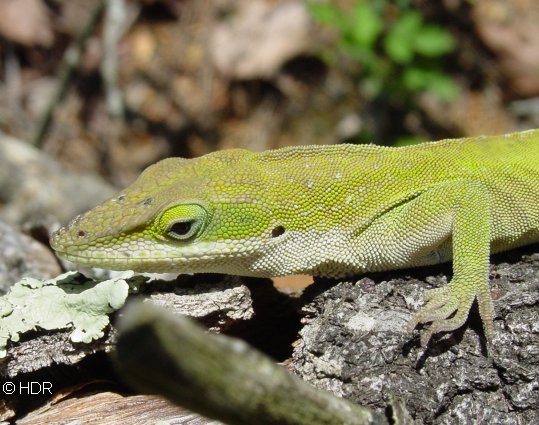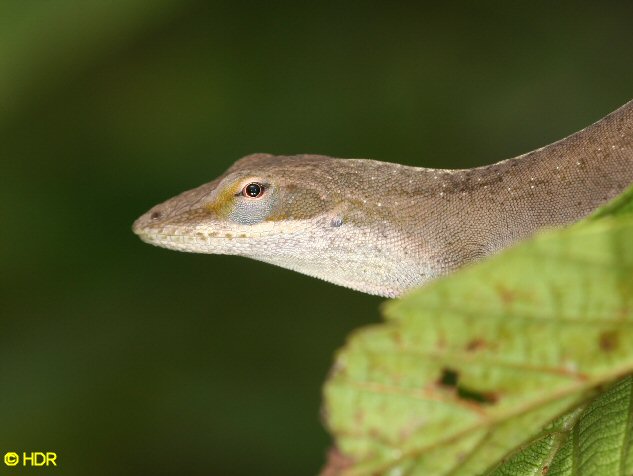|
|
|
Several of the skinks have blue tails as young but only the Five-lined Skink, Eumeces fasciatus, in our area has this beautiful blue contrasting with the cream and deep brown stripes above. The tail is detachable and I suppose that blue is a lure to keep predators from striking something more critical. It is hard to grab these young guys without them dropping that tail as a wriggling decoy behind them. The adult Five-lineds lose the marked blue color. |
|
|
|
A near adult who still has quite a fine blue tail. He was totally relaxed on this log for many photos. Seemed to be basking in one sunstruck spot here at Lorance. |
 |
| And a very large blue tailed juvie. This must be one big male in the making. He was already over six inches. |
 |
| And this is the adult male Five-lined. He has just had a large cricket snack. Note the red facial blush. |
